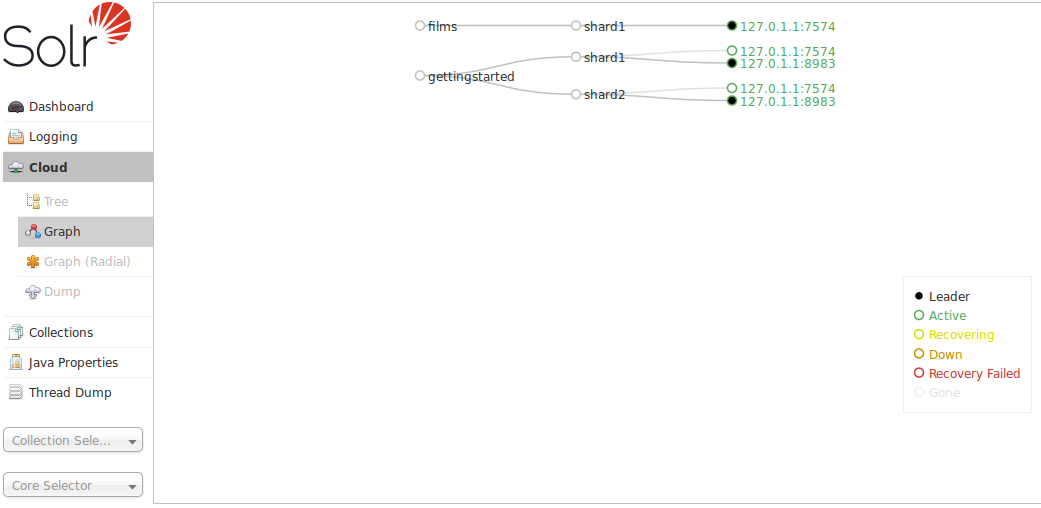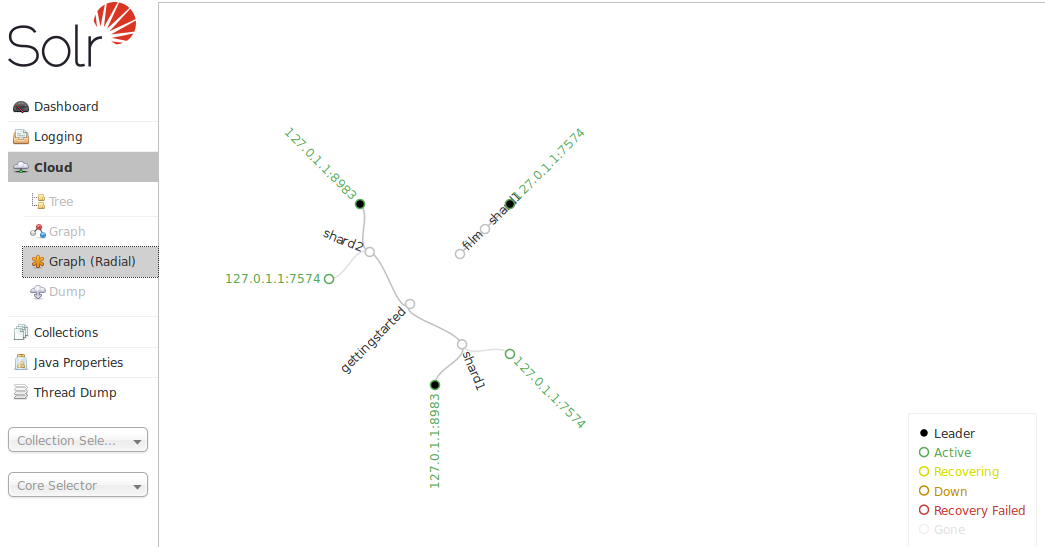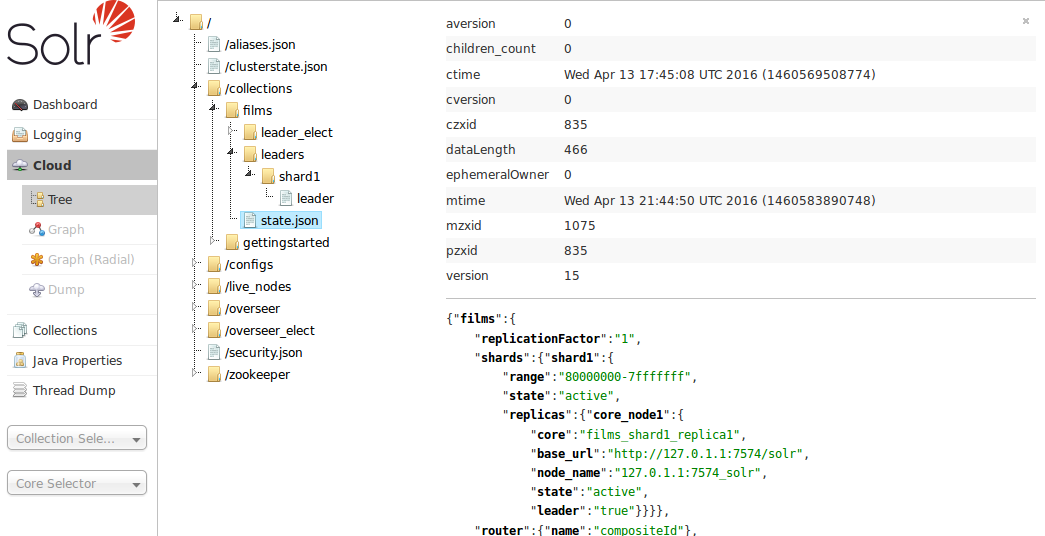When running in SolrCloud mode, a "Cloud" option will appear in the Admin UI between Logging and Collections/Core Admin.
This screen provides status information about each collection & node in your cluster, as well as access to the low level data being stored in ZooKeeper.
|
Only Visible When using SolrCloud
The "Cloud" menu option is only available on Solr instances running in SolrCloud mode. Single node or master/slave replication instances of Solr will not display this option. |
Click on the Cloud option in the left-hand navigation, and a small sub-menu appears with options called "Tree", "Graph", "Graph (Radial)" and "Dump". The default view ("Graph") shows a graph of each collection, the shards that make up those collections, and the addresses of each replica for each shard.
This example shows the very simple two-node cluster created using the bin/solr -e cloud -noprompt example command. In addition to the 2 shard, 2 replica "gettingstarted" collection, there is an additional "films" collection consisting of a single shard/replica:

The "Graph (Radial)" option provides a different visual view of each node. Using the same example cluster, the radial graph view looks like:

The "Tree" option shows a directory structure of the data in ZooKeeper, including cluster wide information regarding the live_nodes and overseer status, as well as collection specific information such as the state.json, current shard leaders, and configuration files in use. In this example, we see the state.json file definition for the "films" collection:

The final option is "Dump", which returns a JSON document containing all nodes, their contents and their children (recursively). This can be used to export a snapshot of all the data that Solr has kept inside ZooKeeper and can aid in debugging SolrCloud problems.